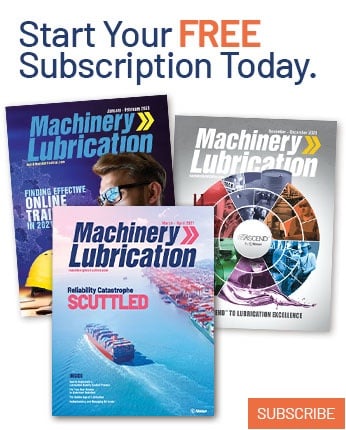Wisconsin manufacturers must adapt to a fast-changing world in order to grow and succeed in the 21st century.
That is the thrust of a major study of the state’s industrial economy recently released by the Wisconsin Manufacturing Extension Partnership (WMEP) and authored by the Manufacturing Performance Institute, an Ohio-based research firm. In addition to its role in helping small and mid-size manufacturers become more competitive, WMEP serves as an advocate for the state’s 10,000 manufacturers.
“Manufacturing is the engine that drives Wisconsin’s economy,” said Michael Klonsinski, WMEP’s executive director. “We believe it will remain that way for years to come if we continue to invest in change and leverage the strengths of our industrial sector.”
The Wisconsin Manufacturing Study was funded by grants from the U.S. Department of Commerce Economic Development Administration and the Waukesha-based Kern Family Foundation.
“What we wanted to find out with this study is what we can do to position Wisconsin as a global manufacturing leader in the 21st century,” Klonsinski said. “The findings and recommendations of this study will help develop industry-led strategies to create a stronger, more vibrant manufacturing economy.”
The study cites a critical need for the state’s manufacturers to pursue value-added strategies, in which they combine products and services into complete value packages that allow for greater customization – and higher profit margins. Manufacturers most threatened by globalization generally are ones with commodity products, which are competing with lower-cost overseas providers.
“To survive, manufacturers have to adapt their businesses to a new reality: Customers increasingly want very different things from what they used to demand. They now expect value to increase continuously. Wisconsin manufacturers must and can respond,” the study states.
Making the conversion from price to value is difficult, but it can be done. But doing so requires a fundamental reorganization of the customer-value package.
The study suggests that manufacturers who want to make this leap need to develop a systematic, continuous methodology to understand what customers really value. They need to focus on building relationships instead of products, with the goal of moving from merely having preferred products to becoming a preferred partner. Information management moves center stage in this business model.
Moreover, manufacturers need to develop a systematic, continuous methodology to evaluate products and services as well as the packages offered by competitors.
The study’s findings also indicate that exports represent a significant opportunity for the state’s many small manufacturers. From 1992 – 2001, 30% of U.S. exports were from small- and medium-size firms, two-thirds of which had 20 or fewer employees. Their numbers grew twice as fast as large-company exporters. The study states that smaller, more flexible companies may be able to grow exports faster than their larger competitors.
Driver industries a competitive advantage
A key finding of the study is the identification of 13 statewide “driver industries” that are the underpinning of the state’s industrial economy. A “driver industry” is defined as one that produces considerably more than Wisconsin consumes, thereby bringing new money into the state and “driving” the economy. The study notes that driver industries are a competitive advantage for Wisconsin, and the fact that Wisconsin has 13 demonstrates the diversity of its manufacturing economy. Nurturing these sectors is the key to economic growth.
“We’ve got a strong foundation to build on,” says Klonsinski. “The driver industries identified in this study represent Wisconsin’s future, not only for themselves but for the industry clusters that depend on them.”
Driver industries, together with their suppliers and customers who benefit from those industries, represent industry clusters, according to the report.
Wisconsin’s primary driver industries include agricultural and industrial machinery, fabricated metal products, electrical equipment, wood products, paper and dairy product manufacturing (see sidebar).
For a complete list of the statewide driver industries, review the executive summary of the Wisconsin Manufacturing Study.
Strengths and weaknesses
Many Wisconsin manufacturers provided direct input into the study, either through a survey or roundtable discussions held in May 2005. Manufacturers said that Wisconsin offers much to support a strong, manufacturing-based economy, including:
- An excellent transportation infrastructure
- At present, a superior, highly-skilled workforce and well-educated managerial and engineering talent
- Outstanding support industries
- A highly valued quality of life
Wisconsin Manufacturers also identified three major barriers to success, including:
- Manufacturing has an outdated image in Wisconsin, making it difficult to attract and retain high quality workers. This is especially true when it comes to finding dedicated replacement workers for the generation of older employees who will be retiring soon.
- Taxes of all types are high in Wisconsin, compared to border and competitor states.
- Businesses are unable to contain manufacturing costs, due to spiraling healthcare, liability insurance, on-the-job training and new machinery and technology costs.
Recommendations
The Wisconsin Manufacturing Study includes a series of recommendations to improve and strengthen Wisconsin’s industrial sector. They include:
- Build on Wisconsin’s driver industries and help them adapt to a new manufacturing economy. Driver industry supply chains should be targeted for improvement services with original equipment manufacturers (OEM) supplier consortia playing a key role.
- Create structural change to heighten the focus on manufacturing. One way this can be accomplished is through the creation of a bipartisan manufacturing task force in the State Legislature. Another would be regular assessment of best practices of competitive and growing firms.
- Take immediate action to address skill shortages. Wisconsin should aggressively promote manufacturing as a high-tech industry with a strong future and high quality of life jobs. The state also should integrate manufacturing into public school education, as well as expand internships for students and teachers to learn about manufacturing’s career opportunities.
- Prepare a broad-scale legislative package based on a close examination of the policies affecting driver manufacturing industries and their industry clusters as well as issues related to healthcare, availability of skilled workers, taxation and regulation.
For more information, please review the executive summary or the full report of the Wisconsin Manufacturing Study. If you have questions regarding this study, please contact Mike Wojcicki of WMEP at 888-372-9602.




